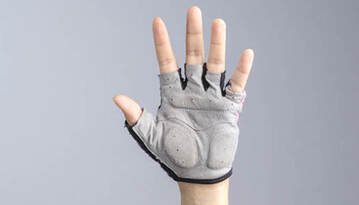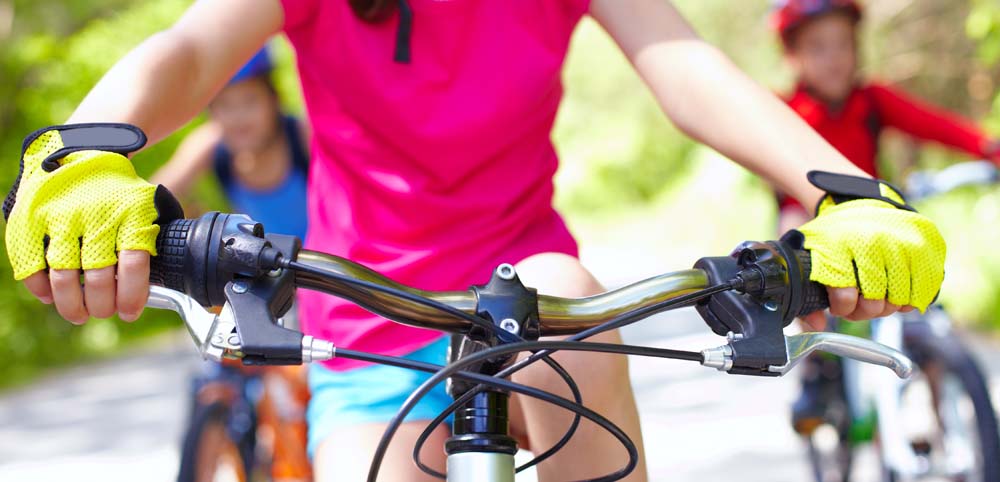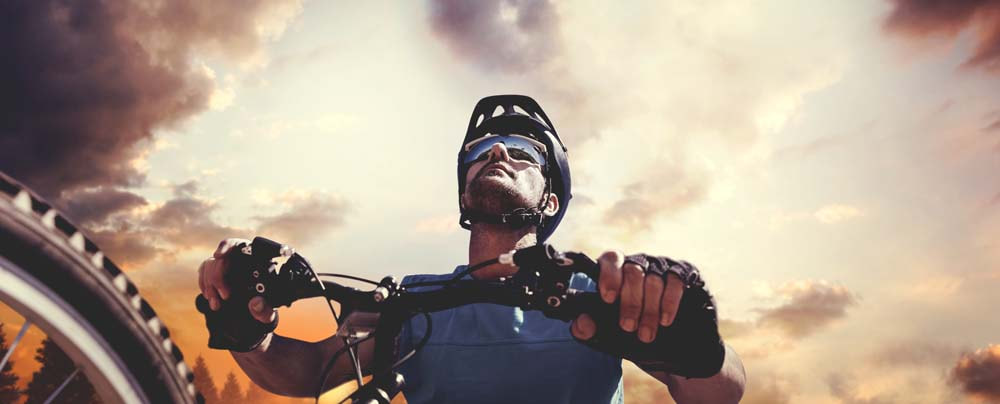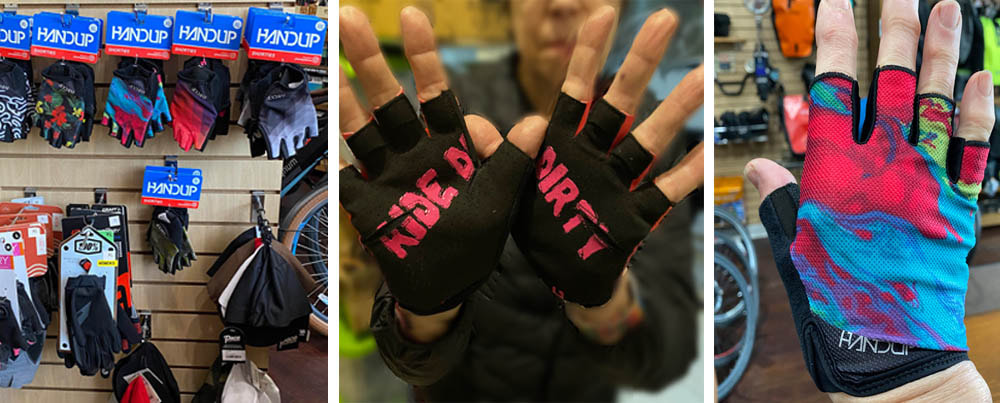 While wearing gloves in cold weather is a no brainer, did you know that gloves are useful when riding a bike all year around? Gloves offer comfort and protection for any sport, but cycling gloves have many benefits and are the number one clothing item that you can purchase that can help assure your rides are safe and comfortable. Here are the top five reasons cyclists should wear gloves. 1) Grip – Cycling gloves will absorb sweat and moisture to help you securely grip the handlebar especially in warm and humid conditions. Without gloves, the moisture on your palms may cause your hands to slip when you bear down on an incline or when you are ready to stop, and this may result in losing control. Gloves will soak up sweat to keep your hands dry so you can maintain a good grip at all times. Gloves are especially useful when you are caught in the rain. 2) Protection – Uneven terrain on the trails or the pavement in an urban environment results in vibrations on all the points you have contact with the bike. These include the feet, saddle, and hands. Gloves will help absorb vibrations and shocks that make their way to the hands. If you should have a fall off your bike, putting your hands out to break the fall is a natural reaction. Gloves will protect the skin on your hands if you have to put them down on the concrete or dirt. If you have light colored handle bar tape or grips, gloves will help keep these clean from the natural oils in your hands and looking fresh for a long time. 3) Comfort – Some gloves come with extra padding to cushion the bones in the heel of your hands as you grip the handlebars but be aware that too much padding is too much of a good thing. Soft tissues in the hand can compress the nerves with too much padding and aggravate carpal tunnel. If you want padding, select a style that has it, but keep it at a moderate level. 4) Fatigue Reduction – The ergonomic features of some gloves will protect your nerves from fatigue. Riders who experience numbness and tingling after long rides will benefit from a good pair of gloves. 5) Warmth – The extremities, such as hands and feet, are exposed in cold temperatures and while you are probably wearing shoes or boots and socks to protect your feet, hands are exceptionally exposed and the first to get cold. Hands gripping the handlebars are relatively inactive and hands generally do not have a great deal of muscle mass and these factors contribute to them turning cold. Gloves will help keep your hands warm and supple, not stiff. What to Look for in a Glove There are many styles and sizes of gloves so it is important to find the right one for your riding style and time of year. Size – Gloves come in multiple sizes for children and adults, from extra small through extra large, including men's and women's size runs, so it helps to try them on if you are looking at a brand which you are not familiar. They should fit snug initially and will stretch as you wear them. Finger style – Cycling gloves are available with full finger coverage, fingerless, or half finger, also known as shorties or track mitts. You’ll want full finger coverage in cold weather and half finger for breathability on warm weather rides. In severe cold weather mittens help the warmth from one finger to be shared with other fingers preventing evaporation of the warmth. Winter gloves will be bulkier and may have layers to improve warmth, longer cuffs to tuck into jackets, so wrists will not get cold, and a waterproof outer layer to repel snow, salt, and road debris. - Lobster claw style gloves are becoming more popular because they are halfway between a glove and mitten--two fingers are placed together sort of like a claw allowing fingers to share warmth between them but also allowing for more dexterity in operating the brakes and shifting components on the handlebars. - Handlebar Mitts permanently mounted to handlebars for a season are another option for keeping hands warm in severe cold weather. You mount the mitts and then dip your hands inside when riding. While technically not a glove since they are not worn on the hands, they serve the same function. Material – Gloves should stretch so you have full finger and palm movement, but you don’t want it to stretch too much and lose its shape so find ones with material that will last. Look at the seams and make sure they will not tear easily. Some have a different material on the palm such as natural or synthetic leather ,or gel, to aid in absorption and cushioning. Some palms are treated with additional material to improve friction and gripping. Comfort features – Half finger gloves can be hard to remove so if you do not want to just pull them off so they turn inside out and either manually turn them around or wear them inside out on the next ride (that’s what I do!) there are some that have tabs that make it easier to pull each finger off. Other features that are useful are soft absorbent fabric on the back of the hand near the thumb or forefinger for wiping off sweat or a runny nose, or a smart phone friendly index finger.
Style – Gloves are available in colors (besides black!) or fun patterns and prints so you can use them to express your style on the bike. Care of Gloves – Washing gloves, either by hand or in a washing machine, after a wet or sweaty ride will remove perspiration and body salt and will help extend their life and reduce odors. When not on the bike, it helps to store them where air can circulate. Comments are closed.
|
Earth Rider Blog about CycingAuthorSharon Kaminecki and others comment on adventures in bicycling and other stories Categories
All
Archives
August 2023
|





